
Last April I reviewed the SoundID 300 Bluetooth Headset. I described it as “Comfortable; Great sound on both ends; Looks good.” Did I really like it? Well let’s just say that since April it is the headset I most regularly use.
So how do you improve on at headset that already is comfortable to wear, not obvious when worn and offers great sound? The company has found a way. Here’s a look at the new SoundID 400 Bluetooth Headset…
From The Company:
Founded by an ear specialist and started with top acoustic scientists ad engineers, Sound ID brings a unique perspective to the telecommunications industry. Leveraging in-depth knowledge of how the human ear processes sound, Sound ID has created the Sound ID 400 Bluetooth Headset. The Sound ID compliments the natural hearing process, resulting in a lightweight, comfortable Bluetooth device that is scientifically designed to feel good, look good and sound even better.
Enhancing the natural hearing experience, the Sound ID 400 successfully delivers exceptional wire-free Bluetooth connectivity, including comfort, acoustic clarity and customized sound settings.
Specs:
Weight: 8 grams (0.28 ounces)
Dimensions: 53.5 x 15.5 x 7.5 millimeters (2.1 x 0.6 x 0.3 inches)
Powerful Battery Life: Up to 7 hours talk time, 200 hours (8 days) standby
Technology: Bluetooth version 2.1+ EDR and eSCO improves sound quality transmission; compatible with earlier Bluetooth versions
My Take:
I have seen a number of people who religiously used a Bluetooth stop using them. Some don’t like the look of the headset. They think it is like having a big, often black, bug crawling on your face. Others don’t like the bother of having to charge it. Others just don’t see the purpose. Personally, I find using a Bluetooth headset to be convenient so long as… and this is a key point… it is the RIGHT Bluetooth headset. Fortunately, like the Sound ID 300 before it, the Sound ID 400 is the “right” Bluetooth headset.
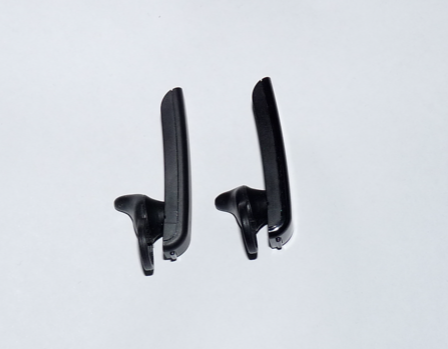
Sound ID 400 left, 300 right
The headset keeps the same form factor as the Sound ID 300. That’s a good thing seeing as this is by far the most comfortable headset I have ever worn. The company describes the fit and feel as “Eargonomic” and while the playful term is a bit too cutesy for me… it is also quite accurate. – The headset is designed for ultimate fit and comfort and while it does ship with earLoops I have yet to find I need them.

Sound ID 400 left, 300 right
The low profile, minimalist approach, and ease of use make it in invaluable headset for daily use. While the 300 was made from hard, shiny, black plastic, the 400 has a nicer soft touch feel that is less prone to showing fingerprints and will likely hold up better in the scratch department.
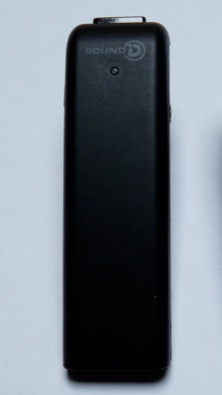
In addition the headset now sports the company name and an indicator light Both, thankfully, are rather subtle. Other than that the headsets are physically the same.
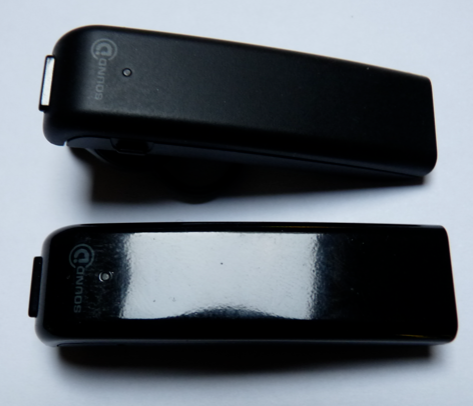
Sound ID 400 top, 300 bottom
The button layout is the same as its predecessor. The power/pairing button sits on the back of the unit. It is barely noticeable.
The Sound ID also features the company’s signature “PersonalSound technology”. These three settings allow you to choose between various audio profiles that adjust different frequencies to best fit your individual heading preferences/needs without raising the volume. It is controlled by a single, easy to reach, button on the unit’s side.
From Sound ID…
How to use PersonalSound™ on the Sound ID 400
While on a call or voice mail press, hold the side button for 2 seconds until you hear beeps. The beeps correspond to the selected PersonalSound:
1 – Normal
2 – Moderate
3 – Strong
4 – Demo turns off NoiseNavigation
The sound quality on the headset is on par with its predecessor. However, I did find that using the right sound profile was even more important with this headset than before. In fact, prior to adjusting the headset properly, the individuals with whom I spoke told me that they heard an echo and poor voice quality. Once I adjusted the headset using the voice system control button on the side however things improved substantially.
Other features of the headset include-
Automatic Volume Control that adjust based on background noise
Wind Protection- that reduces the impact of wind on the headset
Advanced Power Management- for 8 days of standby use and 7 hours of talk time
Multipoint Connectivity- so the headset can be paired with two devices at the same time
Environmental Mode-
One downside of most headsets is that, while wearing it, one ear is blocked or cut off from the rest of the world. As a result, if you keep the headset in you are effectively “deaf”, or at least suffer “hearing loss”, in that ear. The Sound ID’s Environmental Mode changes all that by grabbing the sound around you and passing sound through the headset and into your ear. The feature is activated by a simple tap of the button.
From Sound ID…
Activating Environmental Mode on the Sound ID 400
When the headset is in standby (not in a call), a long press of the side button will activate Environmental Mode and amplify your surroundings between calls without removing the headset. A short press on the side button will advance the volume one step. Repeat as necessary to ?nd the right level. To turn Environmental Mode OFF – a long press of the side button.
What does that mean in real-world use? It means that for the first time ever you can forget you’re wearing a Bluetooth headset at all because you can listen to the world around you with both ears while still wearing the headset.
I have used it for the last few days and find it quite effective. I should note, however, that I had a friend try it and she did not like the effect of the Environmental Mode and found it “jarring”.
Sound ID Remote Microphone-

Another new feature of the Sound ID 400 is the optional Remote Microphone. The company explains
The Sound ID 400 headset has an optional wireless mic accessory with a range of up to 30 feet, which allows you to extend your hearing range. The Remote Microphone can be worn by passengers, children in child seats, conference room situations, or used as a TV listener. If you receive a phone call while the Remote Microphone is active, answer and when you’re ?nished the Remote Microphone will automatically reconnect.
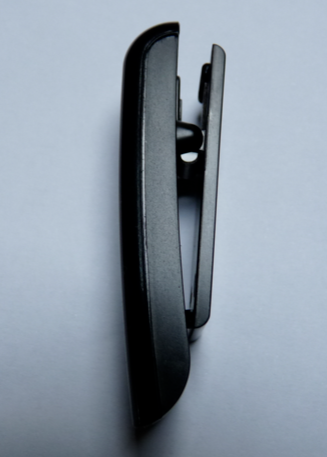
The Remote Microphone weighs just 8 grams, offers up to 10 hours of talk time and sports the 30 foot in-sight range typical of Bluetooth devices. Surprisingly it is made from the same shiny plastice as the 300 rather than the new, soft-touch material of the 400. It is great for use with “the person sitting in your passenger seat or at the back of the mini-van”. You can also “place the Microphone near the TV to better hear your favorite Sitcom”. Another use is to “place it at opposite end of the conference table to clearly hear what colleagues are saying”.
Do you NEED the Remote Microphone? Nope, BUT I can see it being handy in a pinch… so long as you have it with you and remember to keep it charged.
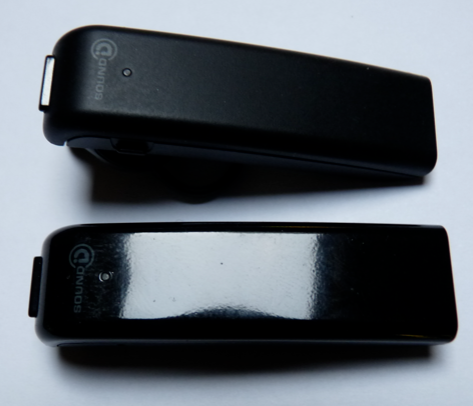
Sound ID 400 top, Remote Microphone bottom
In short, the Sound ID 300 was one of the top Bluetooth headsets I have tried. The Sound ID 400 takes all that was good about the 300 and builds on it. I HIGHLY recommend this headset if you are looking for a comfortable, great sounding headset and are willing to pay a premium for it.
The Sound ID 400 will be available in Q4 for $129.99 MSR. The Sound ID Remote Microphone will also be available later this month for $79.99 MSR. For details and availability check the Sound ID website HERE.
What I Like:
Comfortable; Great sound on both ends; Looks good; love the Environmental Mode
What Needs Improvement:
At high-end price-wise; Settings a bit more finicky than the 300 requiring you to make sure to adjust is properly in order to take advantage if its advanced sound technology.

I have been using the Jawbone 2 headset. How does the SoundID 400 compare to the Jawbone 2 & Jawbone Prime?
Thanks
I have not used a Jawbone device since the first version. (And my experience with that was not good- three broke in rapid succession.)
What I do know is that the mechanism the Sound ID uses to hold the headset in place is far more comfortable than any headset that requires an earloop. Since The Jawbone Prime also uses an in-ear mechanism to hold it in place I suspect it too is pretty comfortable.
Sound id 400 bluetooth hands free headset is very lightweight and durable! I like that it connects to both my work and personal lines easily and allows for volume control.
Is the sound quality and noise reduction comparable or better than the Jawbone 2/Prime?